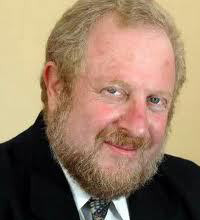The Myths & Realities of Generational Transfer: Change in Argentine legislation
Generational Transfer Models
Ariel Diéguez, 35 years old, is the eldest son of Carlos and Mariana, the founders of a family business. When he finished high school, Ariel went to work with his parents at their factory, while his brother Francisco, now 33 years old, went to school and graduated with a degree in business administration. Although he plans to join the family business, Francisco is currently working full time as an international consultant. The youngest sister, Annabella, 29 years old, is finishing a degree in marketing and is about to give birth to her first child.
One night, after the new Civil and Commercial Code of Argentina was put into effect, the future of the business was brought up around the family dinner table:
“I’ve been contributing to the business since I was 18 years old,” says Ariel to his brothers, “while you left to study and live your lives, which is why you cannot expect to join the business in equal conditions. When our parents are no longer here, I should have the majority. The new code is in my favor.”
Francisco and Annabella do not agree. They believe that the business should belong to the three of them equally. After listening to all three children, the parents share their point of view:
“The business is the fruit of a lifetime of labor,” says Carlos. “We are grateful for Ariel’s contribution, but we pushed Francisco and Annabella to earn degrees for the sake of the business, so that they could one day join. That is why we believe that the business should belong to the three of you equally, although, of course, Ariel’s effort during these last few years should be recognized in some way other than a larger share. We could give him an apartment, for example.”
“Also, we are looking ahead,” adds Mariana. “We believe that this business should last for many generations. Even if Francisco and Annabella do not join, we would like the business to remain open to the possibility of our grandchildren joining. For this reason, we want to establish a process of generational transfer that would allow your children and grandchildren to feel like owners of this business so that they can join in the best way possible.”
Behind the positions of each family member are different models for the continuation of family businesses:
- Ariel’s position reflects the selective model: this model establishes that the business, or the majority of shares, should definitively belong to the heir that has contributed for the longest time, excluding, totally or partially, those who have not participated in the labor.
- The younger siblings, supported by their father, reflect the integrative model: in this model the foundation of succession is family ownership. This model conceives of the children as equal heirs of the capital, and it differentiates between those who work for or direct the company from those that do not participate by salary, director fees, and performance awards.
- Mariana, the mother, goes a step further in that she expresses a desire for future generations to participate. This reflects the principles of the representative model, which encourages the participation of successors in the capital, but regulates the ability to make decisions for the business based on their respective family lineages with a strict system of shareholder representation. For such purpose, this model relies on figures such as:
- The syndication of shares;
- The constitution of share-holding companies; and
- Trusts.
The Myth & Reality behind Each Model
The integrative model, which reflects the position of Francisco, Annabella, and their father, corresponds to the vision of a family-owned or directed business that transcends generations and constitutes an economic-family group, applying its surpluses to the expansion of current business or to the foundation of new enterprises. In this model, consciousness of the privilege that is implied by membership in the family business is the starting point for cementing emotional and economic bonds marked by collaboration and mutual respect.
The family, as a unit, relies on equal measures of effort and commitment in successive cycles that will be completed in the long run. For this reason, the fact that members of the current generation do not participate in the management of the business is not a reason to exclude them.
A descendent that today only has a small share of the capital and does not participate in the business may perhaps be the leader of the economic-family group in the coming generation.
Values such as solidarity, mutual understanding, work collaboration, respect of the freedom of individuasl to choose their own career path, and reconciliation of interests are the platform for a never-ending education and the foundation for shared pride, not only for the business-owning family, but also for the society in which it operates.
The representative model, demonstrated by Mariana, is a higher phase of the previous model. This model implies the consolidation of standards for the best management of the business across generations. By electing a representative for each group of shareholders (normally divided by their different family lineages), the need for multiple meetings is eliminated.
With this model, it becomes possible to elevate the level of business discussions, because the requirements for admissibility can be established based on the technical training and moral fitness of the representatives.
Furthermore, situations that could put family peace at risk are avoided — for example, in the hypothetical case that a family member supports the nomination of his or her cousins and votes with them, thus harming his other siblings. Additionally, the representative regimen typically favors restricting the sale of shares to extended family or to third parties, establishing priority for members of the same family lineage.
In the integrative as well as the representative model, the vision consists of the family business benefiting from the diversity, talent, and training of its members, who, in many cases, have an incentive (whether material or symbolic) to actively participate and, in turn, are subject to requirements specially designed so that no one participates in the family business without a minimum level of preparation to perform his or her duties.
In the selective model, proposed by Ariel, the survival of the business is not the consequence of the will and the action of a group, but is rather the fruit, principally, of the effort of a single successor, embodied by the motto: “The King is dead, long live the King.”
Normally, the selective model corresponds to businesses in which the family performs the majority of the labor, i.e., when the priority is to work for the business. Historically, this is the model for businesses owned by immigrants, where the strength of the labor surpasses the value of the invested capital.
The Change in Legislature Presents a New Reality
The old Civil Code of Argentina, which was in effect until July 31 of 2015, favored the integrative model of generational transfer:
- Little freedom for the parents to dispose of the patrimony through inheritance (barely one fifth of the estate);
- Mathematical equality among heirs; unaltered, even in cases of disability or lack of legal protection;
- Inability for any one of the heirs to have a larger portion of the patrimony;
- Absolute prohibition of future inheritance agreements.
However, after August of 2015, a significant change in generational transfer is now in effect with the sanction of a new Civil and Commercial Code that, in practice, promotes the selective model:
- The portion that can be used to favor an heir or a third party is increased from 20% to 33.33% of the patrimony.
- Future inheritance agreements are admitted for “the conservation of the business management unit or for the prevention or resolution of conflicts.” These agreements may include designation of the future majority shareholder or, more directly, the attribution of the business to a particular heir (as reflected in the desires and expectations of Ariel).
- Preferential attribution is established in favor of the spouse or the heir that has participated in the formation of the business. This implies that, whether by decision of the founder or by request from the spouse or heir, the business may remain in the hands of a single person. In this example, it would be Ariel who could make such a request.
- The bidding process is incorporated in succession: an heir may convene the other heirs and establish that the one offering the most money (or assets) remains with the business, excluding the others. This reduces the family unit and business to a simple question of arithmetic, i.e., the heir that offers the most remains with the business — a dynamic that can be repeated every life cycle, impeding the consolidation of the family business with participation from various lineages over time.
What are the reasons for applying the selective model to succession?
- The founder is able to choose a single successor for the business.
- The lack of affectio societatis among siblings.
- The lack of interest of some heirs to form part of the family business.
- An individual demonstrates leadership and a desire to own the business.
- The law encourages application of this model.
Progress or Setback?
Historically, the selective model has been preferred in especially conservative regions of the country and, obviously, by those who, like Ariel, have been involved in the business from a very young age and who consider that this gives them differential rights over their siblings with regard to ownership of the business. As such, the selective model is naturally associated with primogeniture and chauvinism, given that it is most commonly the eldest male child that is first involved in the family business and who later, in one way or another, fights to prevent the participation of his siblings.
In small family businesses that have a drive for institutional development, the integrative model is preferable since it allows for the participation of all the children, albeit in diverse roles and not necessarily full-time. This is the position that Francisco and Annabella adopt in the Diéguez family discussion.
Within medium-size businesses there usually exists a concern over establishing legal mechanisms that would allow the greatest consolidation over time. It is for this reason that they often times resort to the syndication of shares, or its equivalent, through a trust or asset-holding company, which holds the shares of each family lineage. In other words, the option chosen is normally the representative model.
Consequently, it can be concluded that, with the objective of simplifying the succession procedures and agreements between parties, the new Argentine legislation has opted to favor the concentration of power, as well as ownership of the businesses, in certain members of the coming generation, instead of involving everyone simply because they are heirs.
The great risk of the selective model is the loss of mystique of the family business, which is replaced by a sort of “cult of personality,” consisting of the founder and the single successor.
Academics and consultants involved with family businesses in Argentina should be conscious of the consequences of these changes and should promote strengthening of the family business culture through formation of vigorous family councils and family protocols that sustain the continuation of family businesses and of business-owning families.
About the contributor
 Leonardo Glikin is a lawyer and a pioneer in the development of the estate planning and succession in Spanish-speaking countries. He founded the Argentine Council of Succession Planning Civil Association and currently directs CAPS Consultores, an interdisciplinary consulting firm that advises on consolidation processes and generational transfer of family businesses. He can be reached at leoglikin@caps.org.ar
Leonardo Glikin is a lawyer and a pioneer in the development of the estate planning and succession in Spanish-speaking countries. He founded the Argentine Council of Succession Planning Civil Association and currently directs CAPS Consultores, an interdisciplinary consulting firm that advises on consolidation processes and generational transfer of family businesses. He can be reached at leoglikin@caps.org.ar




